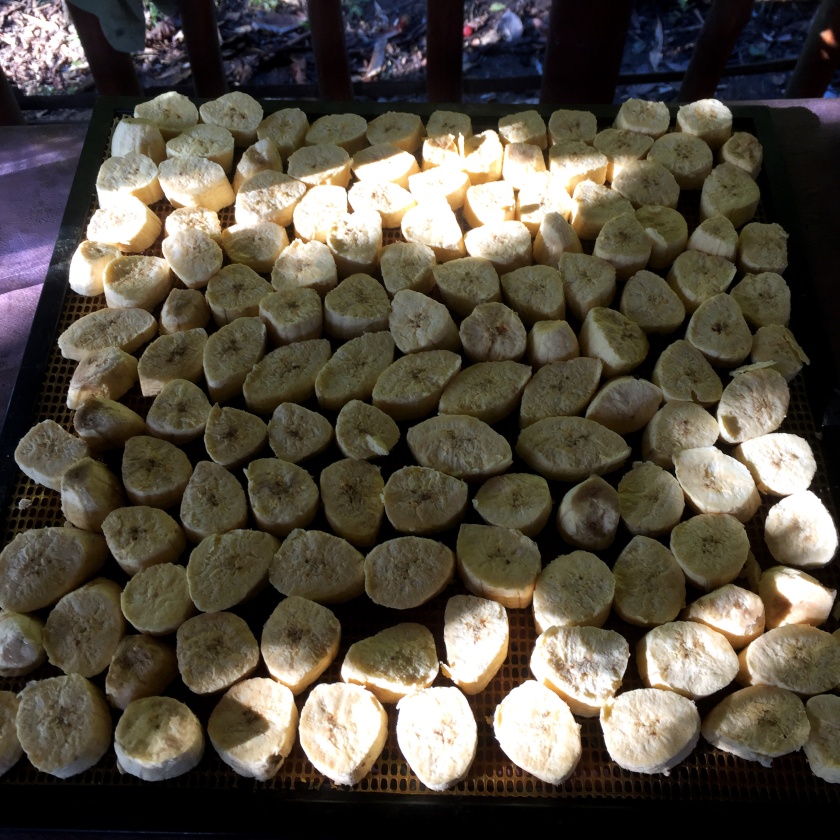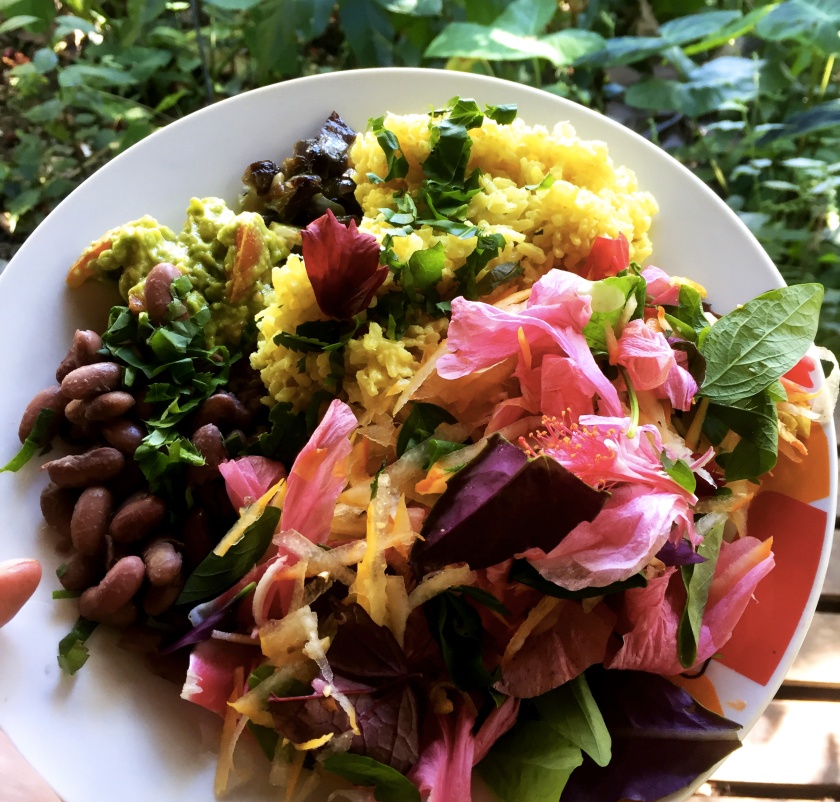I spent two weeks at the Finca Inti, and discovered the delicious variety of foods that a productive jungle has to offer. A daily and multi-sensory gastronomic journey.
Leaves, fruits & roots
Located in a tropical climate -both very sunny and very humid, the jungle where Tristan lives produces plenty to feed his family (freely and easily). Every day, a big bag and machete in hand, we gather food for the meals of the day.

When we wake up, we grab fresh rambutans from the tree. We fill whole bags of these red and hairy fruits that taste kind of like lychee. In Costa Rica they are called: « Mamoncillo ». We open them with our teeth, crunch their juicy white flesh and spit their kernel over the terrace. Daily breakfast consists only of fresh squeezed lemons and rambutans. Energizing and healthy!

Palm trees offer a resource I had never heard of before. « Pejibaye » (or Peach palm) are orange-green pepper-like fruits. You boil them in water. Once cooked, you peel them. They have the taste and consistency of pumpkin and sweet potato. They are abundant and extremely nourishing.

Plantain is another abundant resource here. We look for the ripe ones and cut a bunch with the machete. Since we can not usually eat all the fresh bananas before they go bad, we use the dehydrator -an expensive but essential tool to process and preserve food. We slice the bananas, dehydrate them and turn them into flour. Then we make delicious plantain flour pancakes covered with homemade chocolate.

Unlike the yucca in your apartment, the yucca here has an edible and delicious root. Also called Cassava, it is the jungle potato. Once peeled, you cut it into pieces and boil it. You can make mashed potatoes or fries out of it. To make hashbrowns, you grate raw yucca root, wring it with bare hands, and make small pancakes that you fry in the pan. (Here we also added grated carrots in the pancakes).
We dig up the roots and also eat the leaves. Everything is used, nothing is lost. Cassava leaves and nettle leaves are delicious boiled. I feel like a character from my childhood books, La famille souris et la racine géante from Kazuo Iwamura! Especially the page where the whole mice family gathers to work around the giant root to use it as food, materials, toys, etc.
Here, Sacha Inchi grow in large numbers. They are star-shaped nuts classified in the « superfood » family. Known and used for millennia in the Amazon rainforest, they are a great source of omega 3, fiber, iron and protein.
We crack them open in a meditative state, before boiling and sauteeing them. Then we coat them with coarse salt and curry powder, and send them to the dehydrator. The curry powder is homemade by Tristan according to a savant secret recipe. It is only made out of ingredients coming from his jungle. He sells those nuts and curry every Saturday at the Puerto Viejo market.
The best of « raw » gastronomy for me? The edible flower salad! We pick leaves, green on one side and purple on the other. Gently, we mix them with what we find around us: crisp white flowers, pink satin bells, young leaves full of chlorophyll, pink creased hibiscus petals and finely grated mountain papaya.
Pure poetry, beauty, refinement. I die of happiness and delight.

Recipes from the jungle
- Jackfruit Hummus: Grown in tropical regions, Jackfruit is also called « the tree of the poor ». Its seeds are toxic if uncooked, but roasted or boiled, they taste like chestnut.
Cook the jackfruit seeds, blend them with sesame cream, avocado and curry powder. Serve cold as an appetizer, ideal for dipping vegetables or chips.

- Gourmet Chocolate by Tristan: Costa Rica is very much renowned for the delicious cacao produced locally from fresh pods.
Melt a 100% pure chocolate bar in a pan, add walnuts (here Sacha Inchi), goji berries and a little sugar. Cool it down and cut into pieces.

(Lire l’article en français)
Contact Tristan: intitalamanca@hotmail.com
More:
– My article about Finca Inti: « 4 Lessons of permaculture in the jungle »
– My article: « One month without internet, fridge or cellphone »








So much beautiful ingredients!
J’aimeJ’aime
thank you for reading!
J’aimeAimé par 1 personne